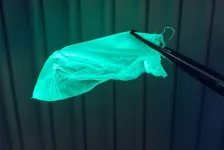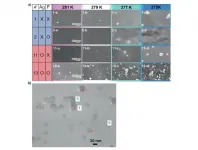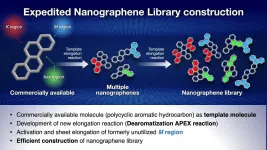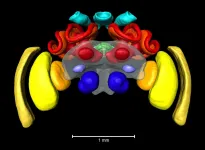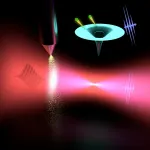Unusual prey: Spiders eating snakes
There are spiders that eat snakes; observations of snake-eating spiders have been reported around the world. Two researchers from Basel and the US consolidated and analyzed over 300 reports of this unusual predation strategy
2021-06-28
(Press-News.org) There are spiders that eat snakes. Observations of snake-eating spiders have been reported around the world. Two researchers from Basel and the US consolidated and analyzed over 300 reports of this unusual predation strategy.
Spiders are primarily insectivores, but they occasionally expand their menu by catching and eating small snakes. Dr. Martin Nyffeler, arachnologist at the University of Basel, and American herpetologist Professor Whitfield Gibbons of the University of Georgia, USA, got to the bottom of this phenomenon in a meta-analysis. Their findings from a study of 319 occurrences of this unusual feeding behavior recently appeared in the American Journal of Arachnology.
It turns out that spiders eat snakes on every continent except Antarctica. Eighty percent of the incidents studied were observed in the US and Australia. In Europe, on the other hand, this spider feeding behavior has been observed extremely rarely (less than 1 percent of all reported incidents) and is limited to the consumption of tiny, non-venomous snakes of the blind snake family (Typhlopidae) by small web-building spiders.
Black widows are particularly successful
Incidents of snake predation by spiders have never been reported from Switzerland. A possible explanation is that Switzerland's native colubrids and vipers are too big and heavy even when freshly hatched for Swiss spiders to subdue them.
The data analysis also showed that spiders from 11 different families are able to catch and eat snakes. "That so many different groups of spiders sometimes eat snakes is a completely novel finding," Nyffeler emphasizes.
Black widows of the family Theridiidae were the successful snake hunters in about half of all observed incidents. Their potent venom contains a toxin that specifically targets vertebrate nervous systems. These spiders build webs composed of extremely tough silk, allowing them to capture larger prey animals like lizards, frogs, mice, birds and snakes.
Big catch
Another new finding from the meta-analysis: spiders can subdue snakes from seven different families. They can outfight snakes 10 to 30 times their size.
The largest snakes caught by spiders are up to one meter in length, the smallest only about six centimeters. According to the statistical analysis done by the two researchers, the average length of captured snakes was 26 centimeters. Most of the snakes caught were very young, freshly hatched animals. That some spiders are able to subdue oversized prey is attributable to their highly potent neurotoxins and strong, tough webs.
Possible insights into the effect of spider venom
Many spider species that occasionally kill and eat snakes have venom that can also be lethal to humans. That means the venom of various spider species has a similar effect on the nervous systems of snakes and humans. For this reason, observations of vertebrate-eating spiders can also be important for neurobiology, as they allow conclusions to be drawn about the mechanisms by which spider neurotoxins affect vertebrate nervous systems.
"While the effect of black widow venom on snake nervous systems is already well researched, this kind of knowledge is largely lacking for other groups of spiders. A great deal more research is therefore needed to find out what components of venoms that specifically target vertebrate nervous systems are responsible for allowing spiders to paralyze and kill much larger snakes with a venomous bite," says Martin Nyffeler.
The captured snakes are anything but helpless themselves: about 30 percent are venomous. In the US and South America, spiders sometimes kill highly venomous rattlesnakes and coral snakes. In Australia, brown snakes (which belong to the same family as cobras) often fall prey to redback spiders (Australian black widows). Martin Nyffeler says, "These brown snakes are among the most venomous snakes in the world and it's really fascinating to see that they lose fights with spiders."
Additional information
Storage of energy reserves
When a spider catches a snake, it will often spend hours or days feasting on such a large prey. Spiders have an irregular feeding pattern. When a lot of food is available, they eat in excess, only to go hungry for long periods again afterward. They store excess food as energy reserves in their body and use it to tide them over longer periods of starvation.
Still, a spider often eats only a small part of a dead snake. Scavengers (ants, wasps, flies, molds) consume what remains.
INFORMATION:
[Attachments] See images for this press release:
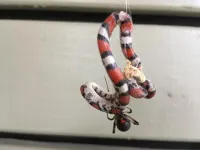
ELSE PRESS RELEASES FROM THIS DATE:
2021-06-28
Announcing a new article publication for BIO Integration journal. In this article the authors Chunxiong Zheng, Mingqiang Li and Jianxun Ding from Sun Yat-sen University, Guangzhou, China and Changchun Institute of Applied Chemistry, Changchun, China discuss the challenges and opportunities of nanomedicines in clinical translation.
Researchers are rapidly gaining a much deeper understanding of the challenges and opportunities of nanomedicines allowing for improvements in disease treatment and improved patient survival.
Deep exploration of the connections between preclinical and clinical ...
2021-06-28
In March 2020, daily life in the United States changed in an instant as the country locked down to deal with the initial wave of the COVID-19 pandemic. New research reveals how residents in one community returned to their routines as the restrictions lifted, according to a team of Penn State scientists.
"We used sound signals captured by underground fiber-optic sensors to understand how COVID measures impacted human activities," said Junzhu Shen, a graduate student in geosciences at Penn State. "These sensors provide very accurate, high-resolution data that can help us understand what's happening in our communities."
The scientists analyzed sound data recorded from March through June 2020 in and around the Penn State University Park campus and State College, ...
2021-06-28
Researchers have developed smart wound dressings with built-in nanosensors that glow to alert patients when a wound is not healing properly.
The multifunctional, antimicrobial dressings feature fluorescent sensors that glow brightly under UV light if infection starts to set in and can be used to monitor healing progress.
The smart dressings, developed by a team of scientists and engineers at RMIT University in Melbourne, Australia, harness the powerful antibacterial and antifungal properties of magnesium hydroxide.
They are cheaper to produce than silver-based dressings but equally as effective in fighting bacteria and fungi, with their antimicrobial power lasting up to a week.
Project leader Dr Vi Khanh Truong said the development of cost-effective antimicrobial ...
2021-06-28
Results of this technique, known as transfer learning, achieved a 99.24 per cent success rate when detecting COVID-19 in chest x-rays.
The study tackles one of the biggest challenges in image recognition machine learning: algorithms needing huge quantities of data, in this case images, to be able to recognise certain attributes accurately.
ECU School of Science researcher END ...
2021-06-28
Osaka, Japan - Scientists at Osaka University, Panasonic Corporation, and Waseda University used scanning electron microscopy (SEM) and X-ray absorption spectroscopy to determine which additives induce crystallization in supercooled aqueous solutions. This work may lead to the development of new energy storage materials based on latent heat.
If you put a bottle of water into the freezer, you will expect to pull out a solid cylinder of ice after a few hours. However, if the water has very few impurities and left undisturbed, it may not be frozen, and instead remain as a supercooled liquid. Be careful, because this state is very unstable, and the water will crystallize quickly if shaken or impurities are added - as many YouTube videos will attest. ...
2021-06-28
A group of researchers at Nagoya University, Japan, have developed a new method for quickly and efficiently synthesizing nanographenes, a type of nanocarbon with great potential as a next generation material.
Nanographenes are the part structures of graphene, which is a sheet of carbon atoms around 3 nanometers thick with particular potential for use in semiconductor development, having electron mobility several hundred times better than current generation materials. Graphene was first isolated in 2004, a discovery which received the 2010 Nobel Prize in physics, making it a very new material which is currently the subject of a great deal of research.
With ...
2021-06-28
The buff-tailed bumblebee Bombus terrestris is one of the most common bumblebee species in Europe. It is not only active in nature as a pollinator - humans also use it in greenhouses and foil tunnels to get good harvests of tomatoes or strawberries.
The buff-tailed bumblebee is also used in science: "Basic research is increasingly using it as a model organism to analyse learning and memory, the visual system, flight control and navigation abilities," says Dr. Keram Pfeiffer, Professor of neurobiology at the Biocenter of Julius-Maximilians-Universität (JMU) Würzburg in Bavaria, Germany.
Pfeiffer investigates the neuronal ...
2021-06-28
A RMIT-led international collaboration published this week has achieved record-high electron doping in a layered ferromagnet, causing magnetic phase transition with significant promise for future electronics
Control of magnetism (or spin directions) by electric voltage is vital for developing future, low-energy high-speed nano-electronic and spintronic devices, such as spin-orbit torque devices and spin field-effect transistors.
Ultra-high-charge, doping-induced magnetic phase transition in a layered ferromagnet allows promising applications in antiferromagnetic spintronic devices.
The FLEET collaboration of researchers at RMIT, UNSW, the University of Wollongong and FLEET partner ...
2021-06-28
The invention of the laser has opened the era of nonlinear optics, which today plays an important role in many scientific, industrial and medical applications. These applications all benefit from the availability of compact lasers in the visible range of the electromagnetic spectrum. The situation is different at XUV wavelengths, where very large facilities (so called free-electron lasers) have been built to generate intense XUV pulses. One example of these is FLASH in Hamburg that extends over several hundred meters. Smaller intense XUV sources based on HHG have also been developed. However, these sources still have a footprint of tens of meters, and have so far only been demonstrated at a few universities and research institutes worldwide. ...
2021-06-28
A naturally occurring peptide in sunflower seeds was synthetically optimised and has now been identified as a potential drug for treating abdominal pain or inflammation (in the gastrointestinal tract, abdominal area and/or internal organs). That is the finding of an international study led by Christian Gruber from MedUni Vienna's Institute of Pharmacology (Center for Physiology and Pharmacology), which was conducted jointly with the University of Queensland and Flinders University in Australia and has now been published.
The scientific aim of the study is to find analgesics that are only active in the periphery and do not cross the blood-brain barrier, as an alternative to commonly used synthetic opioids. Gruber explains the background: "Morphine was one of the first ...
LAST 30 PRESS RELEASES:
[Press-News.org] Unusual prey: Spiders eating snakes
There are spiders that eat snakes; observations of snake-eating spiders have been reported around the world. Two researchers from Basel and the US consolidated and analyzed over 300 reports of this unusual predation strategy


